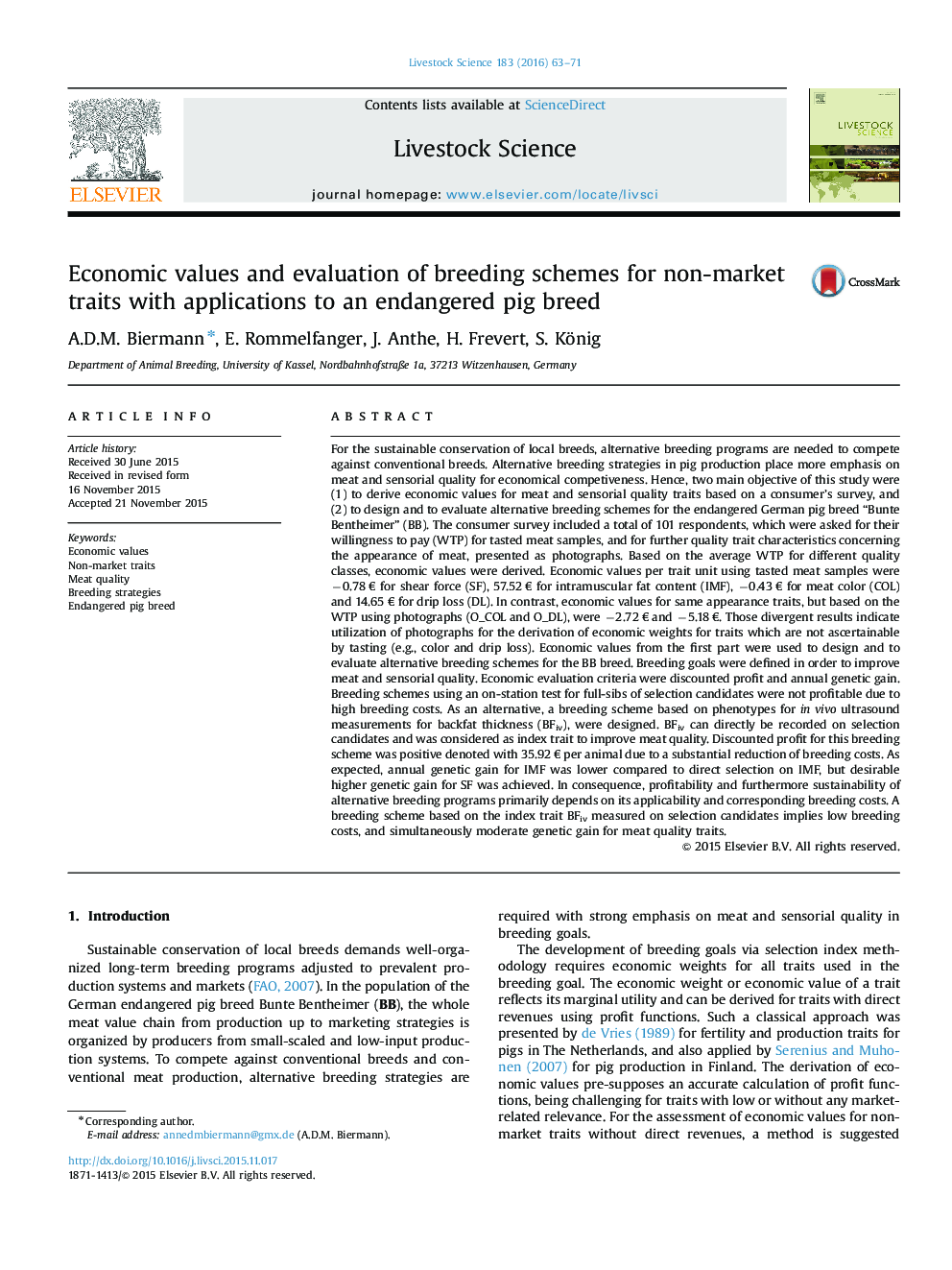| کد مقاله | کد نشریه | سال انتشار | مقاله انگلیسی | نسخه تمام متن |
|---|---|---|---|---|
| 2446950 | 1553949 | 2016 | 9 صفحه PDF | دانلود رایگان |
• Derivation of economic values (EV) for non-market meat quality traits in pigs.
• An approach based on consumers’ willingness to pay.
• Alternative breeding schemes for an endangered pig breed were modeled and evaluated.
• Schemes have to be adapted to the small-scale and low-input production systems.
• In vivo ultrasound measurements for backfat as index trait improve meat quality.
For the sustainable conservation of local breeds, alternative breeding programs are needed to compete against conventional breeds. Alternative breeding strategies in pig production place more emphasis on meat and sensorial quality for economical competiveness. Hence, two main objective of this study were (1) to derive economic values for meat and sensorial quality traits based on a consumer’s survey, and (2) to design and to evaluate alternative breeding schemes for the endangered German pig breed “Bunte Bentheimer” (BB). The consumer survey included a total of 101 respondents, which were asked for their willingness to pay (WTP) for tasted meat samples, and for further quality trait characteristics concerning the appearance of meat, presented as photographs. Based on the average WTP for different quality classes, economic values were derived. Economic values per trait unit using tasted meat samples were −0.78 € for shear force (SF), 57.52 € for intramuscular fat content (IMF), −0.43 € for meat color (COL) and 14.65 € for drip loss (DL). In contrast, economic values for same appearance traits, but based on the WTP using photographs (O_COL and O_DL), were −2.72 € and −5.18 €. Those divergent results indicate utilization of photographs for the derivation of economic weights for traits which are not ascertainable by tasting (e.g., color and drip loss). Economic values from the first part were used to design and to evaluate alternative breeding schemes for the BB breed. Breeding goals were defined in order to improve meat and sensorial quality. Economic evaluation criteria were discounted profit and annual genetic gain. Breeding schemes using an on-station test for full-sibs of selection candidates were not profitable due to high breeding costs. As an alternative, a breeding scheme based on phenotypes for in vivo ultrasound measurements for backfat thickness (BFiv), were designed. BFiv can directly be recorded on selection candidates and was considered as index trait to improve meat quality. Discounted profit for this breeding scheme was positive denoted with 35.92 € per animal due to a substantial reduction of breeding costs. As expected, annual genetic gain for IMF was lower compared to direct selection on IMF, but desirable higher genetic gain for SF was achieved. In consequence, profitability and furthermore sustainability of alternative breeding programs primarily depends on its applicability and corresponding breeding costs. A breeding scheme based on the index trait BFiv measured on selection candidates implies low breeding costs, and simultaneously moderate genetic gain for meat quality traits.
Journal: Livestock Science - Volume 183, January 2016, Pages 63–71
